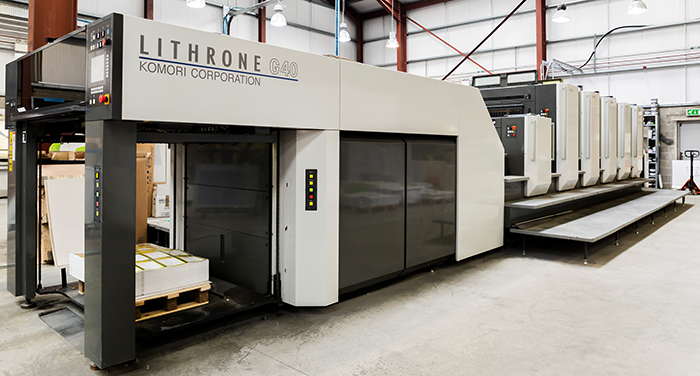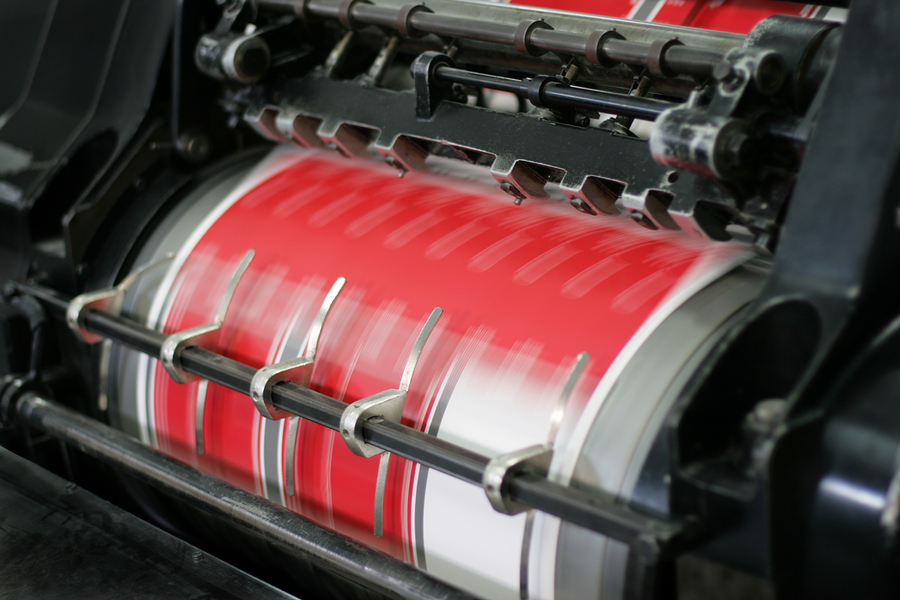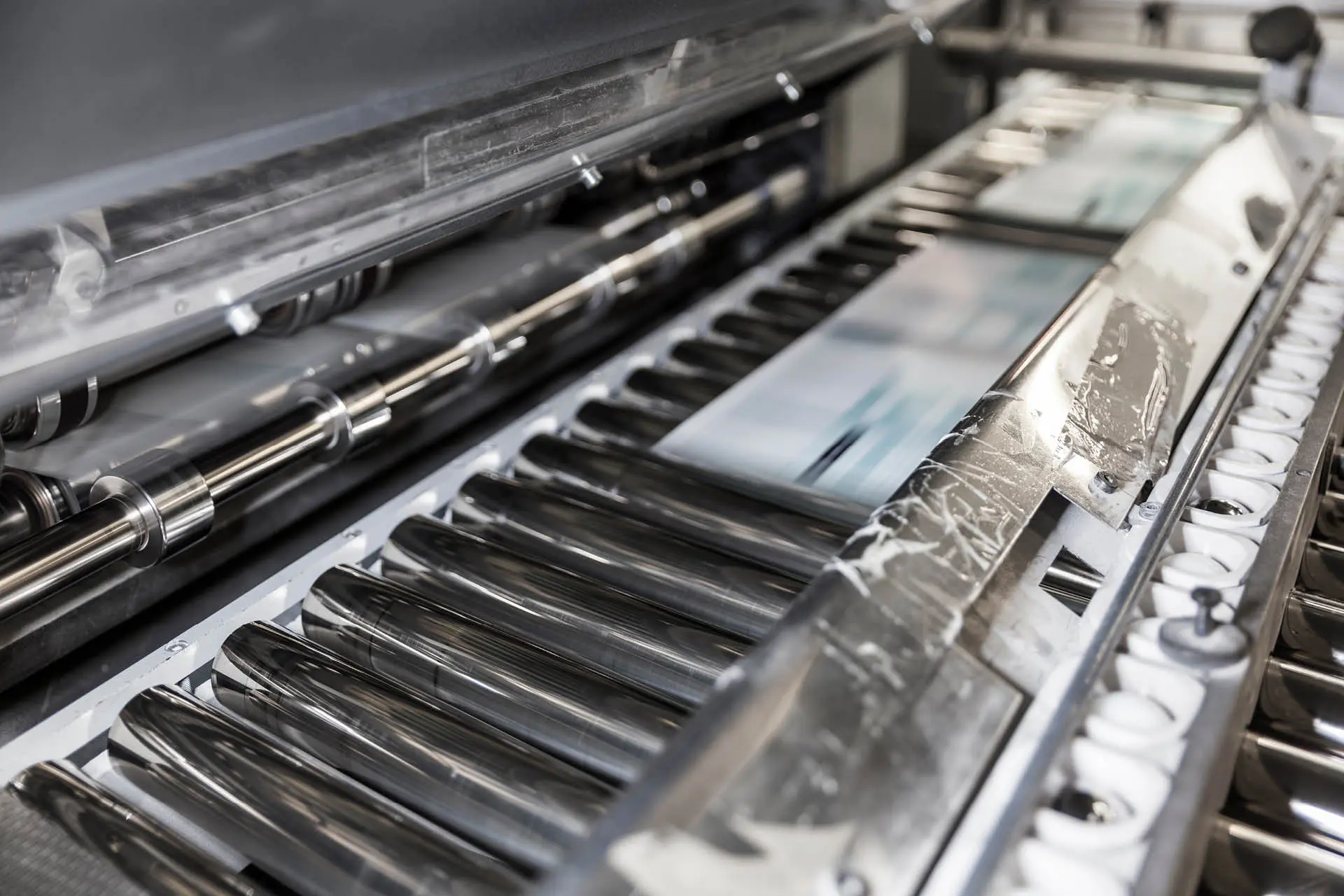Can litho printing Be an Eco-Friendly Printing Solution?
The Vital Overview to Understanding Litho Printing and Its Applications
Litho printing stands as a substantial technique in the printing market, rooted in the concepts of oil and water repulsion. This strategy not just supplies top notch photos yet also accommodates different industrial demands. Its applications vary from marketing products to product packaging, showcasing its versatility. As the industry adapts to brand-new modern technologies, the development of litho printing elevates inquiries about its future and importance in a digital landscape. What exists in advance for this withstanding technique?

What Is Litho Printing?
Litho printing, a widely made use of printing strategy, depends on the principle of oil and water repulsion. This method employs a flat printing surface, commonly a metal plate, which is treated to assure that the image locations are receptive to oil-based inks while the non-image areas repel them. The procedure starts with the development of a photo on the plate, often via illustration or photo means. As soon as the picture is prepared, the plate is moistened with water, adhered to by the application of ink. The ink adheres only to the image locations, permitting accurate recreation of graphics and text. Litho printing is favored for its capacity to produce top notch prints with fine detail and vivid shades. It is commonly used in commercial applications, including newspapers, publications, and product packaging, showcasing its convenience and performance in satisfying the demands of modern printing.
The Background of Lithography
Lithography is a modern printing staple, its beginnings map back to the late 18th century when German playwright Alois Senefelder developed the technique in 1796. At first established as a technique for replicating messages and photos, lithography used a level rock surface area to produce prints through a chemical procedure. Senefelder's advancement enabled better versatility and creative expression compared to previous printing methods.By the 19th century, lithography gained extensive approval, coming to be a preferred option among musicians and publishers. It made it possible for the automation of illustrations, maps, and posters, significantly impacting the printing market. The strategy better evolved with the intro of lithographic presses, boosting efficiency and quality.As the commercial transformation advanced, lithography adapted to meet the needs of commercial printing, leading the way for modern-day applications. Today, it remains a vital method in various markets, consisting of publishing, product packaging, and art reproduction.
Exactly How Litho Printing Functions
A key feature of litho printing is its dependence on the principle of oil and water repulsion - litho printing. In this process, images are transferred from a level surface area, generally a steel or polymer plate, to paper. Home plate is dealt with to ensure that the areas meant for printing bring in ink, while the non-image areas repel it due to their affinity for water. The printing begins by dampening the plate with water, which complies with the non-image areas. Consequently, an oil-based ink is used, sticking only to the desired picture areas.When the plate comes into contact with the substrate, the ink is moved, creating a print. The litho printing procedure can creating premium pictures with great information. It is usually made use of for automation due to its performance and consistency, making it a preferred approach for commercial printing applications
Advantages of Litho Printing
One notable benefit of litho printing is its capacity to create top notch photos regularly, making it an ideal choice for commercial jobs. This printing method uses a flat printing plate, making sure also ink circulation and sharp details. Litho printing is also renowned for its shade accuracy, making it possible for vivid and true-to-life recreations, which is necessary for branding materials.Moreover, it supports a variety of substrates, consisting of paper, cardboard, and even certain plastics, enhancing its convenience. The process is affordable for big runs, as economies of range decrease per-unit costs. On top of that, litho printing has a quick turn-around time, permitting efficient production schedules.Its sturdiness also implies that printed materials withstand fading, making certain that the last item preserves its visual charm gradually. On the whole, these benefits make litho publishing a preferred selection across different markets, contributing to its enduring popularity.
Applications of Litho Printing in Organization
As companies increasingly seek dependable and high-quality printing solutions, litho printing becomes a principal in different applications. This technique is particularly preferred for generating advertising and marketing materials such as brochures, flyers, and catalogs, thanks to its capacity to deliver dynamic shades and sharp images. In enhancement, litho printing is often used for product packaging remedies, allowing business to develop appealing tags and boxes that improve product appeal.In the industry of company identity, litho printing is important in creating expert stationery, calling card, and advertising merchandise, which help strengthen brand acknowledgment. In addition, it is commonly made use of in the posting sector for printed products such as books and magazines, where consistent high quality is critical. Generally, litho printing's flexibility and performance make it an important device check over here for companies aiming to connect properly and develop a strong market existence.
Artistic Utilizes of Litho Printing
Litho printing works as a versatile medium in the domain name of printmaking, offering artists an unique approach to share their imagination. This method permits a large range of creative applications, from traditional prints to contemporary analyses. By exploring the subtleties of litho printing, musicians can harness its distinctive high qualities to boost their job.

Printmaking Strategies Review
The artistry of printmaking includes a diverse variety of strategies, with litho printing standing apart for its special technique to picture production. This approach depends on the concept of oil and water repulsion, permitting musicians to attract directly onto a sedimentary rock or steel plate with a greasy tool. Once prepared, home plate is moistened and inked, transferring the picture onto paper with pressure. Litho printing is celebrated for its ability to create great information and rich tonal variants, making it a preferred selection amongst artists. In addition, the process is functional, fitting both traditional techniques and modern-day adjustments. This versatility permits litho printing to bridge numerous imaginative styles, enriching the printmaking landscape with its unique features and abilities.
One-of-a-kind Artistic Applications
Discovering the special imaginative applications of litho printing reveals its exceptional adaptability in numerous innovative fields. Musicians use litho printing to develop intricate styles and textures, allowing for meaningful and detailed jobs. The procedure assists in the recreation of vivid colors, making it perfect for illustrations and fine art prints. Many modern musicians accept lithography for its capability to combine traditional techniques with contemporary principles, resulting in innovative art work. Additionally, litho printing is commonly used in the production of restricted version prints, improving their worth and allure. The tactile top quality of litho prints adds an unique measurement, attracting collection agencies and art lovers alike. On the whole, litho printing remains a significant medium for creative expression, bridging timeless methods with contemporary creativity.
The Future of Litho Printing in a Digital World
As the printing market progresses, litho printing encounters the difficulty of incorporating digital innovations to stay pertinent. Methods focused on electronic assimilation, together with trends in sustainability and innovation, will shape its future - litho printing. Comprehending these characteristics is vital for industry stakeholders wanting to adjust to a swiftly changing landscape
Digital Assimilation Strategies
An expanding number of litho printing business are accepting digital combination techniques to stay competitive in a progressively digital landscape. By integrating digital process, these business can streamline procedures and enhance performance. This integration enables real-time information management and boosted communication between departments, decreasing turn-around times noticeably. Furthermore, electronic devices allow better modification and customization of published materials, satisfying particular client demands. Firms are likewise adopting crossbreed printing services that integrate conventional litho techniques with digital modern technologies, providing flexibility in production. Leveraging data analytics helps in recognizing market trends and client preferences, allowing companies to make educated choices. In general, digital integration is coming to be necessary for litho printing companies Check Out Your URL intending to innovate and reply to developing market demands.
Sustainability and Innovation Trends

Often Asked Questions
What Products Are Commonly Used in Litho Printing?
The materials generally made use of in litho printing include aluminum plates, ink, water, and paper. Each component plays an important duty in the printing procedure, making sure high-quality photo recreation and reliable transfer of ink onto the substrate.
How Does Litho Printing Contrast to Digital Printing?
Litho printing offers remarkable shade uniformity and top quality for huge runs, while digital printing masters short runs and modification. Each technique has distinctive benefits, satisfying various requirements based on production visit this page range and cost-efficiency.
What Is the Regular Turnaround Time for Litho Printing Projects?
The normal turnaround time for litho printing jobs varies, normally varying from a few days to numerous weeks. Variables affecting this duration include task intricacy, amount, and needed ending up processes, affecting general production schedules.
Can Litho Printing Accommodate Custom-made Sizes and Formats?
Litho printing can certainly fit customized sizes and formats, allowing for versatility in layout. This versatility enables customers to accomplish distinct print results tailored to their specific requirements, improving the overall performance of their jobs.
What Are the Environmental Influences of Litho Printing?
The ecological influences of litho printing include resource intake, chemical usage, and waste generation. Nonetheless, developments in lasting practices and environmentally friendly products are gradually decreasing these adverse effects, advertising a more eco accountable approach to printing.